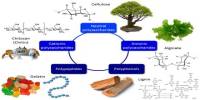According to a recent study by researchers in the Institute for Biomedical Sciences at Georgia State University, a new universal flu vaccine protects against various types of both influenza A and B viruses in mice.
The multi-neuraminidase protein subtypes, which are well-known to be important antiviral treatment targets, and the globally conserved M2 ectodomain protein were chosen by the researchers as the principal cross-protective, less changeable components of the influenza A and B viruses.
The results, which were reported in the journal PLOS Pathogens, show that mice immunized with an immune-stimulating virus-like particle displaying multiple neuraminidase subtypes and conserved M2 portions of antigens (foreign proteins that trigger immune responses) were protected against influenza A seasonal variants and pandemic potential viruses (H1N1, H5N1, H3N2, H9N2 and H7N9) as well as influenza B (Yamagata
When influenza infections alter the main surface hemagglutinin protein that interacts to host receptor molecules, viral variants are created. The emergence of variations that have evaded the host immune system results from ongoing mutational alterations in the flu hemagglutinin proteins and causes severe flu illness.
The foundation of the current influenza vaccines is strain-specific immunity to hemagglutinin, a highly changeable immune defense target. Annual influenza vaccination is advised, although due to ongoing changes in hemagglutinin proteins, the seasonal vaccine’s efficacy can be unpredictable and as low as 20%.
We developed a single, universal vaccine entity that induced immunity to conserved M2 ectodomain and multi subtype neuraminidase proteins and was found to be effective in conferring broad cross protection against antigenically diverse influenza A and B viruses in young and aged mice. This study provides impactful insight into developing a universal influenza vaccine inducing broad immunity against both flu A and B variants in young and aged populations.
Dr. Sang-Moo Kang
Therefore, influenza remains a high risk to human health worldwide.
“We developed a single, universal vaccine entity that induced immunity to conserved M2 ectodomain and multi subtype neuraminidase proteins and was found to be effective in conferring broad cross protection against antigenically diverse influenza A and B viruses in young and aged mice,” said Dr. Sang-Moo Kang, senior author of the study and a professor in the Institute for Biomedical Sciences at Georgia State.
“This study provides impactful insight into developing a universal influenza vaccine inducing broad immunity against both flu A and B variants in young and aged populations.”
This research backs up a cutting-edge plan for developing a robust vaccination against influenza A and B viruses.
According to the study, a single construct with multiple cross protective proteins has the ability to induce immunity to M2 and multi-subtype neuraminidase proteins of influenza A and B viruses as well as provide widespread cross protection against illness and mortality under lethal flu virus challenges in mice.
Mice vaccinated with this potential universal vaccine led to T cell immunological responses, M2 ectodomain-specific antibodies, and widespread neuraminidase inhibition. In older mice, comparable cross protection was induced.
Given that ferrets have similar respiratory systems to humans, the result justifies future testing of this novel, all-encompassing vaccination candidate in these animals.
Co-authors of the study include Ki-Hye Kim (co-first author), Zhuo Li (co-first author), Noopur Bhatnagar, Jeeva Subbiah, Bo Ryoung Park, Chong Hyun Shin, Bao-Zhong Wang and Sang-Moo Kang of the Institute for Biomedical Sciences at Georgia State; and Peter Pushko of Medigen Inc.
The study is funded by the National Institute of Allergy and Infectious Diseases (NIAID) of the National Institutes of Health (NIH).
















